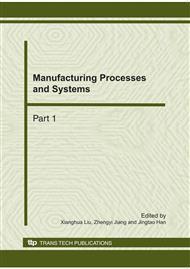p.1607
p.1611
p.1619
p.1623
p.1629
p.1634
p.1639
p.1643
p.1648
Synthesis of High Surface Area Porous Silicon Carbide by Employing Soft Template in the Sol-Gel Process
Abstract:
High surface area porous silicon carbide was synthesized by a modified sol-gel method. In the sol-gel method, furfuryl alcohol and tetraethoxysilane were used respectively as carbon and silicon precursors for preparing a carbonaceous silica xerogel. Polymethylhydrosiloxane (PMHS) was employed as pore-adjusting agent in the sol-gel process. SiC was obtained by the carbothermal reduction of the carbonaceous silica xerogel at 1300 oC in argon flow and then purified by removing excess silica, carbon and other impurities. XRD、FTIR、SEM、HRTEM and BET were used to characterize the SiC samples. The results show that the SiC products are found to have high specific surface area of 135 m2 /g. PMHS has important effect on the surface area, pore volume of the SiC products. It is therefore suggested that PMHS plays the role of structure-directing agent that enhances the production of mesoporous pores in the SiC products.
Info:
Periodical:
Pages:
1629-1633
Citation:
Online since:
October 2010
Authors:
Price:
Сopyright:
© 2011 Trans Tech Publications Ltd. All Rights Reserved
Share:
Citation:


